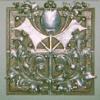The Amazing And Wonderful Famous-Barr
The Amazing and Wonderful Famous-Barr
As I begin posting my series of Christmas short stories and novellas set in this department store, I am struck by how paltry and sad the Wikipedia entry is for this amazing company. In an effort to improve that article, I have created this short summary, which I hope to tweak and eventually add to wiki.
My information comes from first-hand sources, primarily documents made by the company, such as employee newsletters and handbooks, and history books concerning the development of Saint Louis in the 19th century.
Please feel free to leave me any feedback, as I do wish this material to be rock-solid and accurate.
----------------------------------------------------
Famous-Barr Overview:
With origins stretching back to 1849, and hundreds of millions of dollars worth of annual sales, Famous-Barr was one of the oldest, largest, and most successful department stores companies in history. It was the flagship enterprise of the multi-national May Company, whose conglomeration of retail, department stores, and shopping malls were headquartered in the same downtown Saint Louis structure as Famous-Barr, The Railway Exchange Building. At the end of the 20th century, The May Company embarked on an aggressive expansion campaign, and by 2006, held more retail assets than their nearest rival, The Federated Department Stores Company. However, in that year, May merged with Federated, and all 30-plus Famous-Barr stores began operating under the 'Macy's' moniker.
History:
- William P. Barr and Company
William Barr was born in Scotland 1827 and immigrated to the United States as a lad at the age of thirteen. He entered the dry goods business in New York soon thereafter, and quickly rose to management positions. In 1849 he was entrusted by his firm with the capital to open a company in Saint Louis, which he did, and which quickly grew to be a major retailer and wholesaler. Barr's soon achieved financial independence, and through expansion and acquisitions grew to have no rival in the West.
By 1880, the store had annual sales topping $2.5 million and moved into the Julia Building, thereby making it the largest retailer in the world. This impressive granite structure, completed in 1869, covered half a city block, fronted Sixth Street, and offered a basement level perfect for special events and promotions. The store took advantage of that fact, and for the Christmas season of 1880 offered the first-ever department store Santa Claus for children to visit free of charge. Two other stores, one in New York, and one in Connecticut, claim to be the origin of the tradition, but in the 1890's (well after Barr's); the NY store put an Santa actor in their window where no one could visit with him, and the CT store's owner dressed as Santa for a holiday parade, but was again not stationed in the store for visitors. Barr's originated the concept we know and love.
By about 1900, Barr's occupied the entire block between Sixth and Seventh Streets, and Olive and Locust Streets, roughly 310,000 square feet of showrooms. In addition, they had a powerhouse, warehouse, wholesale division, mail order section, candy kitchen and bakery, plus shipping and receiving in a ten-story facility one block away at Saint Charles and Seventh Street.
- Famous
Established in 1870 as primarily a men's ready-to-wear haberdashery, the establishment apparently had no memorable name above its door. Company history has it that an early customer arrived one day saying word of mouth was spreading rapidly in his rural area, and that the store was becoming quite famous in surrounding parts. The name Famous was instantly and officially adopted.
The business grew rapidly, primarily due to the fact that ready-to-wear was a new concept in the 1870s, and Saint Louis firms like Rice, Stix and Company were in the vanguard of making affordable clothing in factory-like settings.
The business grew rapidly, and became recognized as a leader of local civic pride with its entries in the Veiled Prophet Parades. They expanded their lines to full department store status with a move to an impressive structure in 1884, and then again to ever larger quarters in 1890, but still focused primarily on fashionable menswear.
In 1892, tragedy struck. A fire damaged a part of the store's facilities and much of its merchandise. The insurance company paid off the claim, but seized the operations.
This is where another immigrant and successful businessman enters the picture. David May bought Famous in a fire sale for $150,000. He had gone out as a young man from his native Germany to the Colorado gold rush. By the time he arrived, all the good claims were taken, but May looked around and saw the miners were flushed with cash but starved for clothes and other luxuries. He pooled his money and procured goods from wholesales like William P. Barr Company and made a fortune in Leadville.
He opened his own mercantiles in many Colorado towns and cities, but kept his eyes on the big-time. The fire sale of Famous was his 'in' to one of the largest business markets in the United States (STL was the fourth largest city in the country) , and a foothold to compete against commercial giants like Barr's.
May then formed a company to be a conglomeration of his different department store holdings, of which Famous was the new flagship enterprise. He procured a rental facility on Broadway and Morgan Streets, and the new Famous Company opened its doors in September 1892 with a gala event.
May continued to purchase department stores in other cities, and each operated with its original name under the umbrella of The May Company, whose headquarters were established in the same building with Famous.
- Famous-Barr
In the latter half of 1911, William P. Barr and Company was in disarray. Earlier in the year, the massive store had temporally closed its doors to begin demolition and construction of The Railway Exchange Building. As the upstanding businessman that Mr. Barr was, he retained the entire staff on salary, but made an arguable mistake in not seeking out temporary space to keep Barr's operations going during construction. Cost overruns, particularly due to the enormous building needing to be built atop an ancient sandbar, made the board members nervous. When Mr. Barr passed away, these gentlemen approached David May.
The merger of The Famous Company and William P. Barr and Company occurred in 1911, and was finalized by the start of the new year. An advertisement in February 1912 announced the formation of the new 'Famous and Barr Company.'

Ad announcing the formation of the new company
from February 12, 1912.
The newly merged company continued on with The Railway Exchange project and moved in on September 8th, 1913, making Famous-Barr the largest department store in the world on that day. This beautiful building, clad in ivory-colored terracotta, covers an entire city block, rises 21 stories, and provides nearly 30 acres of floor space, or in excess of 1,300,000 usable square feet.
The structure remained the world's largest commercial building until the 40-story Equitable Building in Manhattan finally managed to offer more floor space in 1915.
Operations thrived, with annual sales topping over $40 million in the early years – at a time when the Federal Budget of the United States was $69 million a year – and Famous-Barr became a model for progressive business practices, offering employee healthcare, retirement plans, 40-hour workweeks, and equal employment opportunities at a time when most companies did not. The store eventually expanded to provide more than ten full floors of retail space in The Railway Exchange Building, and The May Company's corporate headquarters took up a large portion of the rest of the facility.
Plans were drawn up in 1940 to expand the operations with three satellite stores, but were shelved due to WW2. The expansion occurred after the war, and Famous-Barr was the first department store in the nation to have 'suburban' outlets.
By 2006 and the sale of The May Company to its longtime rival Federated Department Stores, Famous-Barr was pulling in $1.5 billion in annual sales, and had more than 35 locations in 5 states, many of which have now been shut down by Federated.
-
 14
14





9 Comments
Recommended Comments
Create an account or sign in to comment
You need to be a member in order to leave a comment
Create an account
Sign up for a new account in our community. It's easy!
Register a new accountSign in
Already have an account? Sign in here.
Sign In Now